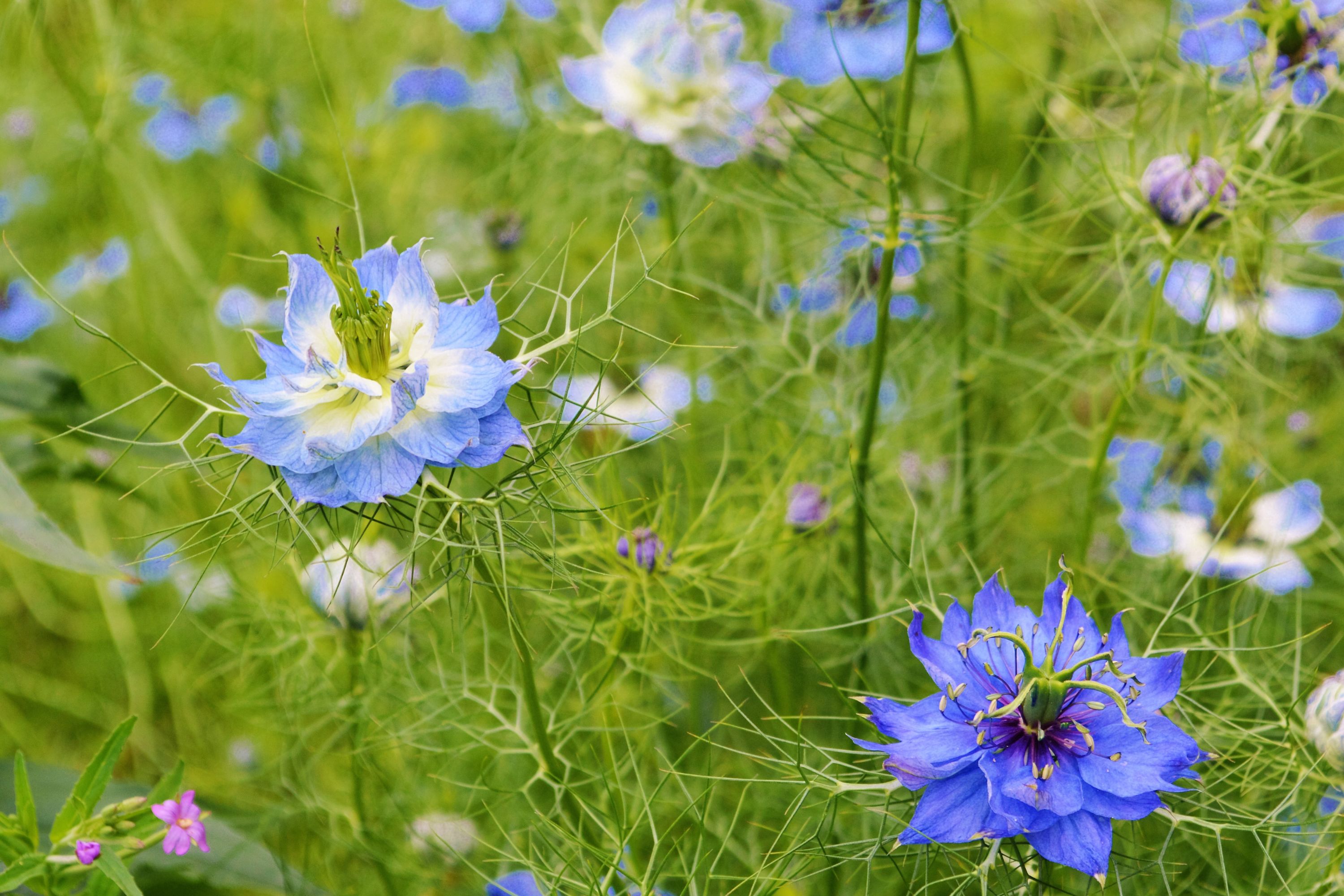Love-in-a-mist
(Nigella damascena)

Description
Nigella damascena, commonly known as Love-in-a-mist, is a beautiful and versatile flowering plant that belongs to the Ranunculaceae family. This annual plant is native to southern Europe and western Asia, but it is now widely cultivated all over the world. In this article, we will delve into the fascinating world of Nigella damascena and explore its characteristics, history, cultivation, and uses. Taxonomy and Classification Nigella damascena belongs to the Ranunculaceae family, which is also known as the buttercup family. This family includes many other well-known plants such as the buttercup, columbine, and anemone. Within the genus Nigella, there are around 18 species, including Nigella sativa, which is also known as black cumin. The scientific name of Nigella damascena is derived from the Latin word 'niger,' which means black. This refers to the plant's distinctive black seeds, which are shaped like small capsules. The species name 'damascena' is believed to refer to the city of Damascus in Syria, which was an important center of trade and horticulture during ancient times. Description Nigella damascena is an annual plant that grows up to 60 cm tall. The stems are slender and branching, and the leaves are finely dissected and feathery in appearance. The flowers are bowl-shaped and have five petals that are usually a shade of blue or purple. The center of the flower is filled with delicate, thread-like structures called stamens that surround a small, rounded ovary. After flowering, the plant produces distinctive seed pods that are covered in long, spiky bristles. Cultivation Nigella damascena is a hardy plant that is easy to grow from seed. It prefers a sunny location with well-draining soil and can be sown directly in the ground in early spring or fall. The seeds should be sown thinly and lightly covered with soil. Once the seedlings emerge, they should be thinned to around 15 cm apart to allow for proper growth and development. Nigella damascena is a self-seeding plant, which means that it will often drop its own seeds and produce new plants without the need for human intervention. This makes it an ideal plant for naturalizing in meadows, wildflower gardens, or along roadsides. Uses Nigella damascena has been used for centuries for both culinary and medicinal purposes. The seeds have a slightly bitter taste and are often used in Middle Eastern cuisine as a spice or seasoning. They are also used in baking to add flavor to bread and pastries. In traditional medicine, Nigella damascena has been used to treat a wide range of ailments, including headaches, digestive issues, and respiratory problems. Modern research has shown that the plant has anti-inflammatory and antioxidant properties and may have potential as a natural remedy for a variety of health conditions. In addition to its culinary and medicinal uses, Nigella damascena is a popular ornamental plant that is valued for its delicate flowers and distinctive seed pods. It is often used in flower arrangements and is also popular in cottage gardens and meadows. Conclusion Nigella damascena is a versatile and beautiful plant that is valued for its delicate flowers, distinctive seed pods, and culinary and medicinal properties. It is easy to grow and care for, making it an ideal choice for both novice and experienced gardeners. Whether grown for its ornamental value or its practical uses, Nigella damascena is a plant that is sure to delight and impress.
Taxonomic tree:







